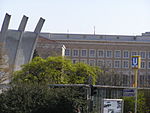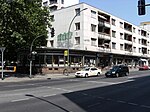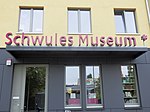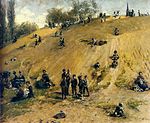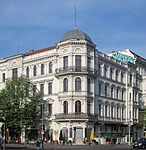Platz der Luftbrücke
Berlin BlockadeBuildings and structures in BerlinSquares in BerlinTourist attractions in Berlin

Platz der Luftbrücke is a landmarked square and transport node in Berlin, Germany, on the border between the localities of Tempelhof and Kreuzberg. The entrance to the former Tempelhof International Airport is on the square. The buildings around the square are now mostly government agencies, in particular police headquarters. The name of the square commemorates the Berlin airlift of 1948/49 (German: Luftbrücke, 'air bridge') in which Tempelhof was the main airfield used; the Berlin Airlift Monument is in the square.
Excerpt from the Wikipedia article Platz der Luftbrücke (License: CC BY-SA 3.0, Authors, Images).Platz der Luftbrücke
Platz der Luftbrücke, Berlin Tempelhof
Geographical coordinates (GPS) Address Nearby Places Show on map
Geographical coordinates (GPS)
| Latitude | Longitude |
|---|---|
| N 52.484166666667 ° | E 13.3875 ° |
Address
Luftbrückendenkmal
Platz der Luftbrücke
12101 Berlin, Tempelhof
Germany
Open on Google Maps
